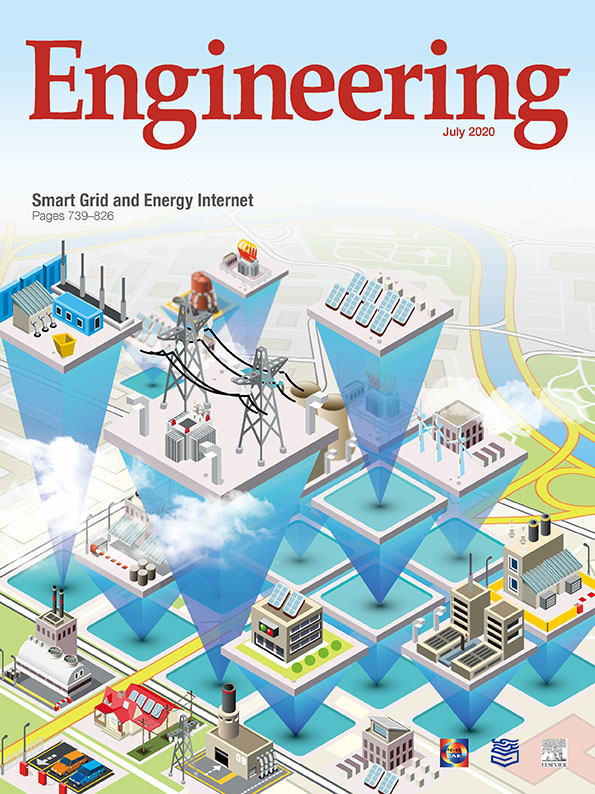Power grids have encountered many challenges in recent years, including low carbonization and national energy security, as well as the stringent power reliability, resiliency, quality, and efficiency requirements of the digital age. Many studies have been conducted on the development and implementation of the smart grid to address these issues. The essential technical characteristics of the smart grid are two-way flow of electricity and information, in order to establish a highly automatic and widely distributed energyexchange network; and utilization of distributed computation, communication, and internet within power grids in order to realize the real-time exchange of information and a near-instantaneous balance between power demand and supply at the device level. Flexible network topology and integrated energy and communication system architecture, huge quantities of distributed energy resources, distributed intelligent infrastructure, and real-time exchange of information are four critical features of the smart grid. In order to enable the smart grid’s functions, innovation is required to induce novel technologies and business models.
This special issue of Engineering is a collection of recent achievements in smart grid research with the potential to significantly promote the development of this field. It contains six papers— including one review article, one feature article, and four research papers—contributed by experts from Australia, Canada, China, Pakistan, the United Kingdom, and the United States.
A grid as smart as the internet is needed to harness the full potential of renewables, accommodate technology disruptions, embrace the rise of prosumers, and seamlessly integrate nano-, mini-, and micro-grids. The article titled "A Grid as Smart as the Internet” proposes a new distributed paradigm as well as a hierarchical network structure and a layered architecture of operating principles inspired by the internet’s way of deploying intelligence. The hierarchical network structure and layered architecture are suitable for serving the grid, as well as the energy internet of the future.
Advanced operation and planning methods are urgently needed to support the enhanced situational awareness, reliability, resilience, and economics of the smart grid. The article titled "Theory and Method of Power System Integrated Security Region Irrelevant to Operation States: An Introduction” systematically reviews the integrated security region defined in the power injection space and in the critical cut-set power space, and presents 11 facts and related remarks to introduce the basic concepts, composition, dynamic nature, and topological and geometric characteristics. In particular, within the scope of engineering concern, the practical boundaries of the security region in such power spaces can be approximated by one or a few hyperplanes, based on which the calculation burden for probabilistic security assessments (i.e., risk analysis) and optimizations of power transmission and distribution systems with security constraints can be decreased by orders of magnitude in comparison with traditional approaches.
Distributed generation is the future of both power and energy. The stand-alone operation of renewable energy resources is one of its operating modes. The article titled "Jaya Learning-Based Optimization for Optimal Sizing of Stand-Alone Photovoltaic, Wind Turbine, and Battery Systems” proposes an effective optimization algorithm for the optimal unit sizing of stand-alone photovoltaic, wind turbine, and battery systems to satisfy the consumer’s load at minimal total annual cost.
Demand response and a related market are needed in order to achieve power balance and improve power utilization. Considering that distributed energy resources belong to large numbers of small customers at the edge of the smart grid, as well as opportunities for localized electricity markets to emerge and develop, the article titled "Transactive Demand Response Operation at the Grid Edge Using the IEEE 2030.5 Standard” presents a transactive demandresponse scheme for a network of residential customers to accommodate privacy concerns, which allows customers to select their demand response compliance level and provides incentives to maximize their participation. The article titled "State-of-the-Art Analysis and Perspectives for Peer-to-Peer Energy Trading” summarizes and analyzes the global development of peer-to-peer energy trading, in which customers equipped with distributed energy resources are able to trade and share energy with each other directly.
An increasing number of artificial intelligence-related and big-data-driven solutions are emerging to push forward the development of the smart grid. The article titled "Super Resolution Perception for Improving Data Completeness in Smart Grid State Estimation” proposes a novel machine-learning-based method for improving data completeness by recovering high-frequency data from low-frequency data. This method assists in performing high-frequency state estimation for an enhanced perception of the system’s operation status.
The smart grid will change how people live and work, just as the internet has done. Due to the need for sustainable R&D and disruptive technological breakthroughs, the realization of the smart grid will require a long-term transition and the coexistence of multiple technologies, which can be understood by reviewing the history of the internet. In the short term, the focus can be placed on achieving a smarter grid that utilizes existing or near-ready technologies in order to improve the efficiency of power grids, provide higher quality power, and create important social benefits such as environmental improvement.
I have been deeply inspired by the impressive work presented in this special issue, and would like to express my gratitude to the authors, reviewers, and editorial office for their great contributions.













 京公网安备 11010502051620号
京公网安备 11010502051620号




